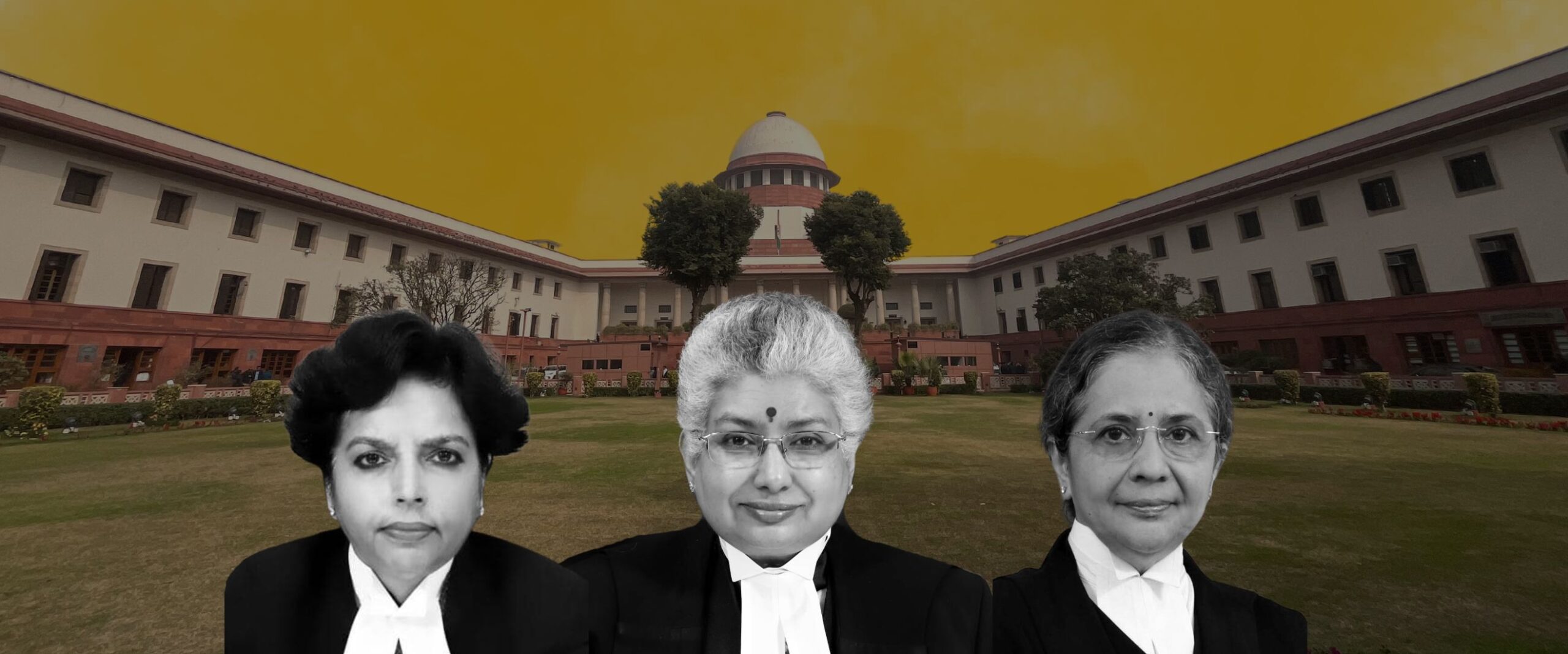Analysis
And then there were two
75 years and 276 judges later, the number of women at the top court remains a shocking low of 4 percent

Yesterday, a ceremonial bench gathered on the occasion of the retirement of Justice Hima Kohli. Justice Kohli was appointed to the Supreme Court on 26 August 2021, along with eight other judges recommended by the N.V. Ramana-led collegium. With her retirement, only two women judges remain on the Supreme Court bench.
At the time, this cohort made news for more than one reason. There had been no new appointments in over two years. The Court was 10 judges short, and nine appointments in one go was unusual. This Court had also never appointed three women judges in a single swoop. Justices Kohli, B.V. Nagarathna and Bela Trivedi joined Justice Indira Banerjee on the bench to create another milestone—the most number of women judges to sit in the court at the same time. Justice Nagarathna is also in line to become the first woman Chief Justice of India, in September 2027.
One of the reasons these wins for gender representation were remarked on extensively was because the Court has not had much to brag about on that front. It had no women judges until Justice Fathima Beevi was appointed in 1989, almost four decades after establishment. In the 35 years since Justice Fathima’s appointment, only 10 more women have been elevated. Out of 276 judges who have served in the Supreme Court, only 11 have been women—a rather abysmal 4 percent.
Over the years, the Supreme Court Collegium has responded to these concerns by contending that the selection pool, which consists primarily of High Court Chief Justices and puisne judges, does not have enough women. The data bears this out. As of 1 August 2024, only 14 percent of High Court judges are women. Only two of the 25 High Courts have women Chief Justices.
Chief Justice D.Y. Chandrachud explained that the lack of diversity in courts today “reflect[s] the state of the profession” a couple of decades ago, when few women entered the profession and even fewer stayed on to rise up the ladder. The Chief has pointed to the encouraging trends in district courts. Indeed, according to the Supreme Court’s State of the Judiciary Report 2023, “women now constitute 36.3 percent of the working strength of the district judiciary.” In 14 of the 16 states that were examined for the report, more than 50 percent of selected candidates in the previous Civil Judge (Junior Division) exam were women.
Yet, the institutional challenges are rather deep-rooted. In an interview with the Supreme Court Observer, Justice Nagarathna had explained that women often “give up the profession” midway for reasons including “marriage, childbearing, rearing.” She urged women advocates to return to the profession after they give birth. “That is the crucial decision she must take,” Justice Nagarathna said. She also called for support from families, flexible work hours, and creches in the court premises.
Justice Kohli, on her part, has previously raised concerns about an ‘Old Boys Club’ and urged women to “shatter more glass ceilings, break more barriers” and “to keep reinventing” themselves. “Please fill the vacancy arising from my retirement with a woman judge,” she said in her farewell speech yesterday.
At the highest level, the Court has been making the right noises, and putting its money where its mouth is, at least in terms of infrastructure. Earlier this week, the Court inaugurated a revamped creche facility, which can accommodate 100 children.
But the Court must remember its own defence when it’s charged with a lack of representation—the real bottlenecks are in the levels below it. We’re old enough as a republic for the absolute numbers to look better year-on-year, but we must confront the ugly truth that our rate of progress has been far from satisfactory.
This article was first featured in SCO’s Weekly newsletter. Sign up now!